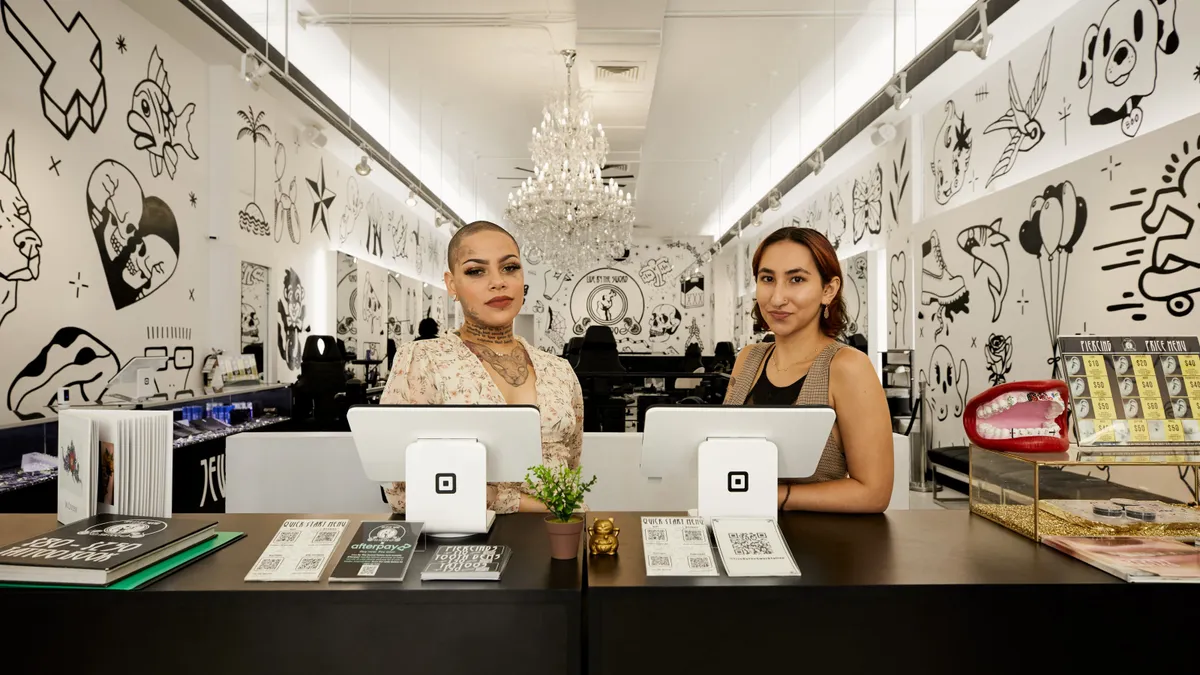As it seeks to expand beyond its roots in the small business market, Square is targeting bigger business customers to fuel its growth this year.
Being labeled a digital payments provider to small businesses is a “natural consequence” of Square having started out distributing its white plastic square card reader to owners of small operations, such as vendors at farmers markets, Square General Manager Saumil Mehta said in a Thursday interview.
There’s an “inherent attachment to that image” that is “largely outdated at this point,” argued Mehta, who oversees point of sale, e-commerce and staff products for Square.
The San Francisco-based company, which was formed in 2009 by cofounders Jack Dorsey and Jim McKelvey, has been trying to change that image in recent years, adopting the parent company name Block in 2021. It kept the Square moniker for its business of selling software tools to businesses.
Square identifies its large business customers as those generating more than $500,000 in annualized gross payment volume, while its mid-sized clients generate between $125,000 and $500,000 in annualized GPV, and its small sellers generate less than $125,000.
Some observers had suggested the pandemic would spell doom for the company, given its base among owners of small businesses, Mehta explained. “All of that wound up being overwrought,” he said, due to the diversity of Square’s client base and product menu.
Block reported a net loss of $435.4 million for the first nine months of 2022, according to its most recent quarterly filing with the Securities and Exchange Commission. The company reports fourth-quarter 2022 and full-year results on Thursday. As a unit of Block, Square’s gross profit rose 29%, to $783 million, in the third quarter of last year.
In trying to shed its early image, Square is focused on upmarket growth this year, along with international expansion and omnichannel growth, Mehta said. The company now counts the restaurant chain Shake Shack and ice cream merchant Ben & Jerry’s among its customers, as well as SoFi Stadium in Inglewood, California, a large restaurant and retail merchant.
Square, which serves merchants in the food, retail and professional services industries, among others, brings clients in through one of its point of sale offerings and then tries to sell them other services, including business loans or payroll management.
As Square targets bigger customers, that cross-selling of its services has begun to pay off, Mehta said. About 38% of Square’s gross profit in 2021 came from customers that adopted four or more products, Mehta said.
Square’s larger business customers made up 40% of its seller base in the third quarter of 2022, compared to 37% in the year earlier quarter and 31% in Q3 2020, according to Block’s third-quarter earnings report.
Square’s gross profit generated from larger sellers grew 22% year over year in the third quarter of 2022. The majority of eateries using Square’s specific restaurant product fall within that seller category, Mehta said.
Still, small Square sellers were responsible for a slightly larger share of Square’s third-quarter mix than its mid-sized sellers, according to the earnings materials.
Square may be pursuing larger businesses, but for the time being, its average clients are still very small. “Even the largest group, while growing well, it’s not like they’re huge merchants,” Baird Equity Research Analyst David Koning pointed out.
And rivals, such as fintech Toast and processor Fiserv’s Clover, have been experiencing faster growth, Koning said. Square is “still taking market share overall, but there’s other games in town now,” he said.
Mizuho analysts have noted some restaurant operators switching from Square to Toast, possibly because they view Toast’s software services more favorably, or see Boston-based Toast as an upgraded provider as they grow their business.
By industry, food and drink made up the largest share (29%) of Square’s gross payment volume in 2021, while retail made up 20%, and professional services, 13%, according to Block’s most recent annual filing with the SEC.
While customers might opt for different providers at different points in their business journeys, attrition is not a problem for Square, in either the restaurant or retail verticals, Mehta asserted.



















